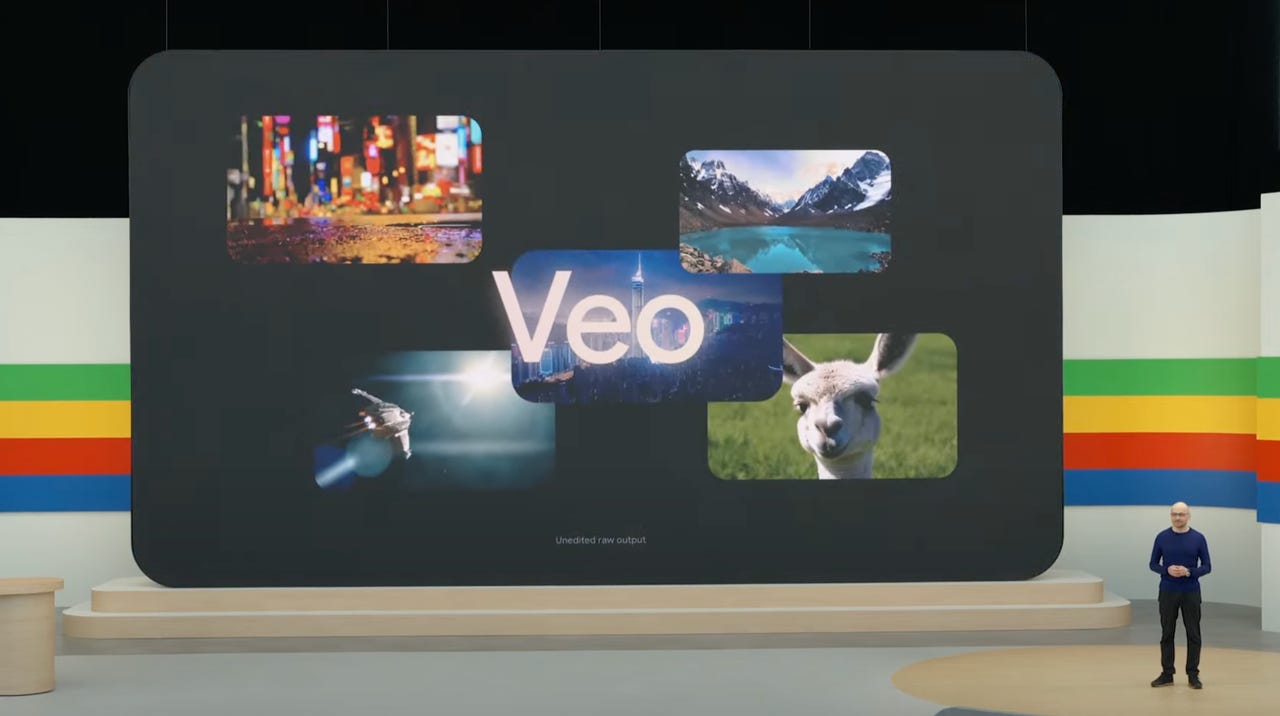Meet Veo, Google's most advanced text-to-video generator, unveiled at Google I/O 2024

AI image generators were all the rage in 2023, but now companies are shifting focus to the next frontier -- AI video generation. With OpenAI unveiling its AI text-to-video generator, Sora, earlier this year, it was only a matter of time before Google did the same.
On Tuesday, at its annual Google I/O developer conference, Google revealed Veo, its most advanced text-to-video generator, capable of generating videos with 1080p resolution that are over one minute long.
Also: Everything announced during Google I/O 2024: Gemini, Search, Android 15, and more
In addition to the high quality of the outputs, Google says that Veo provides users with an "unprecedented level of creative control." The AI generator's deeper understanding of natural language enables Veo to deliver more details from longer prompts and to understand cinematic terms like "timelapse" or "aerial shots."
Additionally, the video generator can tackle a common problem with video generation -- the fluidity of shots. According to Google, Veo can create consistent footage, with different subjects such as people, animals, and objects moving realistically in the shots.
Google isn't new to video generation: The company acknowledged that this model builds on all the company's prior video-generating projects, including Imagen-Video, VideoPoet, and Lumiere.
Like OpenAI's Sora, Google's Veo is not available to the public just yet. Rather, Veo is being shared first with a select number of creators in a private preview inside VideoFX. Google did, however, invite the public to join a waitlist to eventually try the model.
Additionally, Google unveiled Imagen 3, its highest-quality text-to-image model to date. Imagen 3, which boasts improved image quality and fewer visual artifacts, is also limited to a private preview inside ImageFX for select creators and has its own waitlist.
